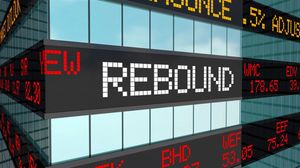
Australian investors are currently exhibiting an unprecedented surge in demand for gold, transforming bullion dealerships across the nation into bustling hubs of activity. This remarkable shift in investment behavior, observed throughout 2024 and accelerating into late 2025, is a direct consequence of escalating global market tensions, a persistent sense of economic risk, and a fundamental desire for wealth preservation. As traditional financial markets grapple with volatility and uncertainty, the precious metal has re-emerged as a paramount safe-haven asset, drawing significant capital flows from individuals and institutions alike seeking refuge from the storm.
The immediate implications of this gold rush are evident in soaring prices and overwhelming demand at the retail level. Gold, denominated in Australian Dollars (AUD), witnessed a substantial 38% increase in 2024 and has continued its ascent in 2025, reflecting a deep-seated investor belief in its enduring value. This phenomenon underscores a broader recalibration of investment strategies in a world increasingly defined by geopolitical instability, inflationary pressures, and a cautious outlook on conventional assets.
Unprecedented Demand Fuels Bullion Boom
The surge in Australian gold demand is not merely a statistical anomaly but a palpable reality on the ground. Bullion dealers in major Australian cities are reporting "spectacular" levels of interest, with establishments like ABC Bullion in Sydney serving over 1,000 customers daily, necessitating extended trading hours and an expansion of staff. Similarly, the Perth Mint has experienced a 75% increase in visitor traffic, prompting significant scaling up of its retail and customer service operations. This sustained uptick in physical gold purchasing is widely described by industry experts as unprecedented, signaling a profound shift in Australian investment psychology towards tangible assets.
This heightened interest has propelled gold prices to historic highs. As of October 2025, the international spot price of gold has surpassed US$4,200 per ounce, even touching US$4,360 per ounce at times. In the local Australian market, prices have climbed above A$6,100 per ounce. These record valuations are underpinned by a relentless "parade of geopolitical risks," including ongoing conflicts, political interventions in major economies, and a general erosion of confidence in traditional financial systems. Events such as the "Liberation Day" tariffs announced by former US President Donald Trump, leading to sharp equity market sell-offs, and concerns over rising unemployment and sovereign debt, have consistently driven investors towards gold as a reliable hedge against both inflation and geopolitical instability.
However, the rapid ascent has not been without its moments of caution. On October 22, 2025, gold experienced a significant correction, plummeting more than 6% to US$4,107 per ounce – its steepest single-day decline since 2013, marking a 12-year volatility record. While this dip has prompted some analysts to question if the market is becoming overly speculative, the underlying drivers of demand appear to remain robust. Major financial institutions like the Royal Bank of Canada (RBC) have upgraded their gold price forecasts, anticipating it could reach US$5,000 (approximately A$7,700) by early 2026, driven primarily by global uncertainty. J.P. Morgan Research also maintains a bullish outlook, forecasting average prices of $3,675/oz by Q4 2025 and a climb towards $4,000 by mid-2026, supported by strong investor and central bank demand.
Gold Miners Poised for Prosperity, Other Sectors Face Headwinds
The sustained surge in gold prices and demand presents a significant boon for Australia's publicly listed gold mining companies. Firms like Newcrest Mining (ASX:NCM), Evolution Mining (ASX:EVN), and Northern Star Resources (ASX:NST) are directly benefiting from the elevated price environment, which translates into higher revenues and potentially expanded profit margins. These companies, already major players in the global gold market, could see increased capital expenditure in exploration and development, leading to higher production volumes in the medium to long term. Their stock valuations are likely to remain attractive to investors seeking exposure to the precious metal without directly purchasing physical bullion.
Conversely, the intense focus on gold as a safe haven could draw capital away from other asset classes, potentially creating headwinds for companies in sectors perceived as more susceptible to economic downturns or market volatility. While the research doesn't explicitly name specific 'losing' companies, a broad shift in investor sentiment towards defensive assets like gold could reduce inflows into growth-oriented equities, certain property trusts, or even some fixed-income instruments if investors prioritize tangible wealth preservation over yield or capital appreciation in other areas.
Furthermore, the operational landscape for gold miners might also evolve. With higher gold prices, marginal mines could become economically viable, potentially increasing overall supply in the long run. However, the current environment primarily favors existing producers with established operations, allowing them to capitalize on the robust pricing. The increased demand for physical gold also benefits bullion dealers and refiners, who are experiencing a surge in business volume and potentially higher margins on their services.
A Broader Shift Towards Tangible Security
The current Australian gold rush is not an isolated event but rather a microcosm of wider global financial trends. It underscores a growing apprehension among investors regarding the stability of traditional financial systems and a pronounced shift towards tangible assets as a hedge against systemic risks. This trend is consistent with historical patterns where gold's appeal escalates during periods of heightened geopolitical tension, economic uncertainty, and inflationary pressures. The weakening Australian Dollar (AUD), which depreciated by 10% against the US dollar in 2024 and continues to struggle in 2025 due to factors like China's slowing commodity demand and Australia's projected fiscal deficit, further amplifies gold's attractiveness for local investors as a means of preserving purchasing power.
Monetary policy shifts also play a crucial role. The US Federal Reserve's initiation of an easing cycle with multiple interest rate cuts has made non-interest-bearing assets like gold more appealing compared to bonds or cash. Conversely, the Reserve Bank of Australia (RBA) has maintained a more dovish stance, with expected rate easing by late 2025, contributing to the weaker AUD. These coordinated, yet distinct, central bank actions create a fertile environment for gold to thrive. The increasing interest in gold from Australian investors also reflects broader global central bank buying, which has been a significant driver of gold demand in recent years, signaling a collective institutional belief in gold's role as a reserve asset and a hedge against currency devaluation.
Historically, gold has consistently served as a reliable store of value during times of crisis, from the oil shocks of the 1970s to the 2008 financial crisis and the recent global pandemic. The current environment, characterized by persistent geopolitical conflicts and economic headwinds, aligns perfectly with these historical precedents, reinforcing gold's reputation as "emotional insurance." The regulatory implications are less direct but central bank monetary policies and government fiscal health are indirectly influencing this flight to safety.
Navigating the Golden Path Ahead
Looking ahead, the trajectory of gold demand and prices will largely hinge on the evolution of global market tensions and central bank monetary policies. In the short term, continued geopolitical instability and lingering inflation concerns are likely to sustain strong investor interest in gold, albeit with potential for price volatility as seen with the recent correction. The Royal Bank of Canada's forecast of gold reaching US$5,000 by early 2026 suggests a strong belief in the persistence of these underlying drivers.
In the long term, gold's role as a portfolio diversifier and wealth preservation tool is expected to solidify further. Financial advisors may need to strategically pivot, incorporating more robust discussions about precious metals into client portfolios, especially for those seeking protection against currency depreciation and market downturns. New market opportunities could emerge for innovative financial products tied to gold, such as gold-backed ETFs or digital gold platforms, catering to a broader range of investors. However, challenges include managing the inherent volatility of the asset and educating investors to differentiate between genuine safe-haven investment and speculative fervor.
Potential scenarios range from a continued bullish run for gold if global instability persists, to a more tempered performance if geopolitical tensions ease and economic growth stabilizes. Investors should also monitor the actions of major central banks, particularly the US Federal Reserve and the Reserve Bank of Australia, as their interest rate decisions will significantly influence the attractiveness of gold relative to other assets. The ongoing strength or weakness of the Australian Dollar will also remain a critical factor for local investors.
A Resilient Haven in Turbulent Times
The surge in Australian gold demand represents a significant financial market event, underscoring gold's enduring appeal as a resilient safe-haven asset in an increasingly uncertain world. Driven by a confluence of global market tensions, persistent economic risks, and strategic monetary policy shifts, Australian investors are demonstrably turning to gold for wealth preservation and portfolio protection. The unprecedented activity at bullion dealers and the sustained high prices reflect a fundamental recalibration of investor priorities towards tangible security.
Moving forward, the market will likely remain highly sensitive to geopolitical developments, inflation data, and central bank communications. While the recent price correction serves as a reminder of gold's inherent volatility, the fundamental drivers supporting strong demand appear firmly entrenched. Investors should continue to watch for further escalations or de-escalations in global conflicts, shifts in interest rate outlooks, and the performance of key currencies like the AUD and USD. The lasting impact of this period may well be a permanent re-evaluation of gold's essential role in diversified investment portfolios, solidifying its position as a crucial asset for navigating turbulent financial waters.
This content is intended for informational purposes only and is not financial advice





